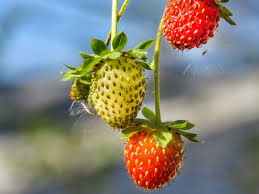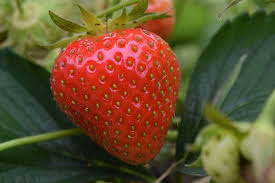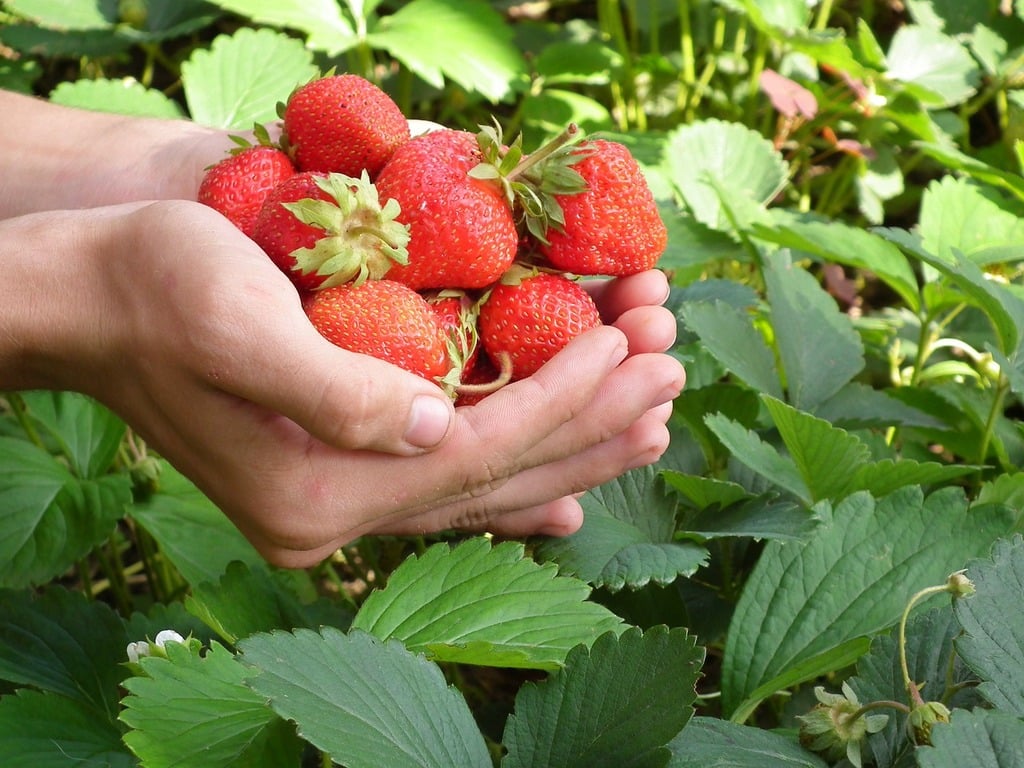Are you a fan of fresh, juicy strawberries straight from the garden? If so, then you’re in the right place! In this insider’s guide, we will provide you with tips and tricks for growing strawberries successfully in your own backyard. Whether you’re a beginner or a seasoned gardener, these valuable insights will help you achieve a bountiful harvest of delicious strawberries.
Understanding the Basics of Strawberry Plants
Delving into the foundational aspects of strawberry cultivation, it’s essential to grasp the nature and needs of strawberry plants. As members of the Rosaceae family, strawberries hold a perennial status, offering more than just a single season of bountiful fruits. Adaptability is a hallmark of these plants, allowing them to flourish across a variety of climate zones. What makes strawberries particularly appealing to gardeners, aside from their delectable fruits, is their relative ease of cultivation. However, to truly maximize their potential, an understanding of their growth cycle and soil requirements is key.
Strawberries demand a habitat that balances sunlight with well-draining soil, a testament to their need for optimal growth conditions. The plants’ roots are shallow, necessitating consistent moisture without the peril of waterlogging. Additionally, strawberries are not just producers of succulent fruits; they are also prolific in generating runners, or stolons, which extend outward to propagate new plants. This characteristic underscores the importance of space management in the garden to accommodate their spreading nature.
Equally important is the nutritional content that strawberries bring to the table. These fruits are a powerhouse of vitamins and antioxidants, making them not only a sweet treat but also a beneficial addition to a healthy diet. Their rich flavor and nutritional benefits are directly influenced by the care and environment provided during the growing process.
By comprehending these fundamental elements – the perennial nature of strawberry plants, their adaptability, soil and sunlight needs, and their nutritional value – gardeners can set a solid foundation for a thriving strawberry patch. This knowledge serves as the groundwork for further exploration into the varietal selection, planting techniques, and care strategies that will lead to a successful harvest.

Choosing the Right Strawberry Variety for Your Garden
Selecting the ideal strawberry variety for your garden hinges on several key factors that align with your unique gardening circumstances and goals. Delve into the three primary types of strawberries: June-bearing, everbearing, and day-neutral. June-bearing strawberries concentrate their bounty into a single, glorious crop usually around early summer, making them a perfect choice for those looking to harvest a large quantity of fruit at once for canning or making jams. On the other hand, everbearing and day-neutral strawberries present a more continuous supply of berries throughout the growing season, albeit in smaller quantities per harvest. This makes them ideal for gardeners who delight in enjoying fresh strawberries over a longer period.
Climate plays a pivotal role in variety selection. Certain varieties may thrive in cooler climates, while others are better suited to warmer conditions. Hence, it’s crucial to research and choose a variety that is known to perform well in your specific climate zone.
Also, consider the space available in your garden. While all strawberries relatively demand the same soil conditions and sunlight, their spatial requirements can vary. For instance, if you’re limited on space, day-neutral or everbearing varieties might be more suitable as they can be easily grown in containers or raised beds, offering flexibility and efficient use of space.
Ultimately, your personal preference for strawberry flavor and use should guide your selection. Whether you favor the sweetness and large fruit of some June-bearing varieties or the unique taste and convenience of picking from everbearing and day-neutral plants, there’s a variety that will meet your gardening aspirations and culinary needs.

Preparing Your Garden for Strawberry Planting
Before diving into the actual planting of strawberries, ensuring your garden is primed for their arrival is crucial. Start by selecting a spot that basks in full sunlight, as strawberries thrive under direct exposure for at least six to eight hours a day. The soil in this chosen area should not only be well-drained but also rich in organic matter to support the nutritional needs of the plants. Conducting a soil test is a wise move to determine its pH level; strawberries favor a slightly acidic to neutral ground, typically with a pH range of 5.5 to 6.8. Should your soil test reveal a pH outside of this range, incorporating lime to raise the pH or sulfur to lower it can help achieve the optimal conditions.
The preparation phase also involves a thorough cleanup of the planting site. Clear away all weeds, grass, and debris to minimize competition and reduce the risk of pest and disease transfer to your new strawberry plants. For gardeners dealing with heavy clay soil or poor drainage, constructing raised beds is an effective solution. Raised beds improve drainage and aeration, key factors in preventing root rot and other moisture-related diseases. Additionally, integrating a generous amount of compost into the soil can enhance its structure and fertility, setting the stage for a successful strawberry crop. By diligently preparing your garden with these steps, you lay the groundwork for healthy growth and abundant strawberry production.

The Secret to Harvesting Perfectly Ripe Strawberries
To capture the essence of a perfectly ripe strawberry, timing and technique are paramount. Observe the color transition of your strawberries to a uniform, vibrant red, an indicator they’ve reached peak ripeness. Unlike some fruits, strawberries will not continue to ripen once picked, making it essential to harvest them at this stage for the optimum sweetness and juiciness.
Approach the harvesting process with a gentle touch. Support the fruit in one hand, while using the other to snip the stem with scissors or pinch it with your nails, leaving a short portion of the stem attached. This method minimizes harm to both the fruit and the plant, ensuring the possibility of continued productivity throughout the season.
Early morning is the ideal time for picking strawberries. Cooler temperatures ensure the berries are firm, making them less susceptible to bruising and damage during the harvesting process. Moreover, the reduced heat of the morning minimizes the evaporation of their natural sugars, preserving the full spectrum of their flavor.
Harvested strawberries should be handled with care. Place them gently in a shallow container to avoid crushing and ensure they are kept cool until ready for consumption or further processing. By adhering to these practices, you can savor the unparalleled taste of homegrown strawberries, reflecting the care and attention dedicated to their cultivation.

Enjoying and Preserving Your Strawberry Harvest
After the rewarding experience of cultivating your own strawberries, exploring the many ways to indulge in and extend the enjoyment of your harvest is both fun and fulfilling. Strawberries fresh from the garden are a delight in themselves, whether eaten straight, tossed into a refreshing salad, or used to top off morning cereals and yogurts. However, the versatility of strawberries goes beyond fresh consumption. For those looking to savor the flavors of their harvest year-round, preserving strawberries offers a variety of options. Freezing is a straightforward method that retains the berries’ taste and nutritional value, perfect for smoothies or baking needs. Making homemade jams and jellies can transform your strawberries into delicious spreads that capture the essence of summer. For a more shelf-stable approach, drying strawberries in a dehydrator or oven creates chewy, sweet snacks that are ideal for on-the-go or adding a burst of flavor to baked goods. By embracing these methods of enjoying and preserving your strawberries, you ensure that the fruits of your labor can be appreciated in every season, providing a constant reminder of the joys of gardening.
